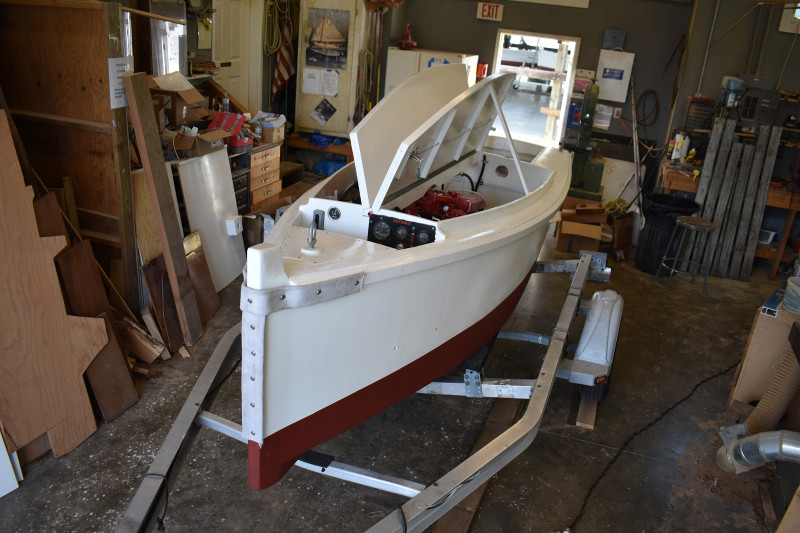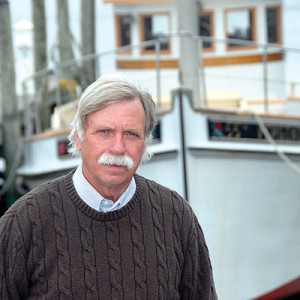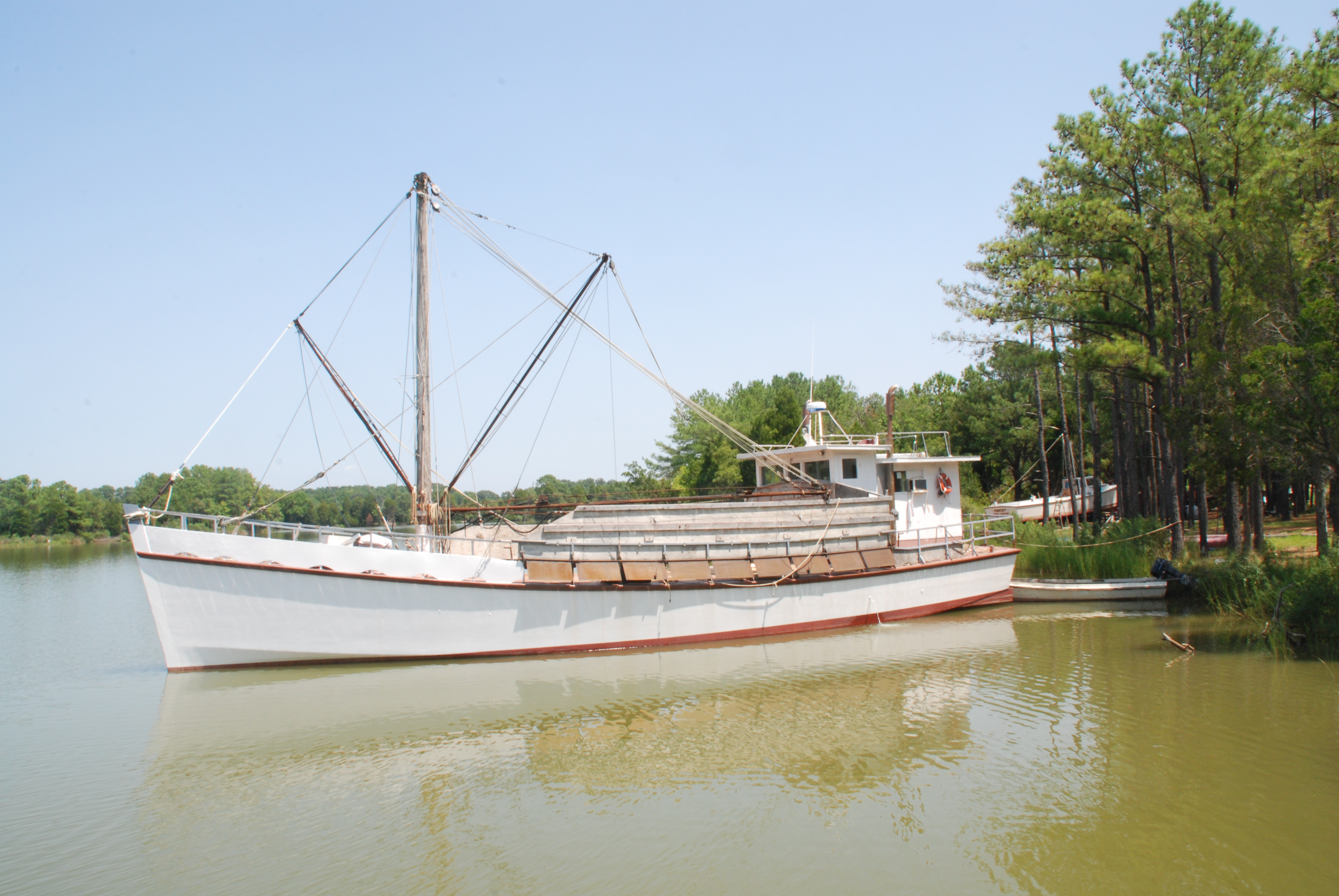Wayne Goddard of Valley Lee, Md., and his son-in-law Brian Hite of Ridge, Md., are rebuilding portions of the 65-foot oyster buyboat Poppa Francis at their railway on St. George River in Piney Point, Md.
The Poppa Francis was built in 1989 by Wayne’s father, Francis Goddard, who has semi-retired from boatbuilding. Few boatbuilders ever really retire. There always seems to be one more boat in them.
The Goddards are installing new wooden decks, two new 225-hp John Deere diesel engines, and a new pilothouse. The original steel decks have been pulled off and are being replaced with pine decking. The new pilothouse is going to be 10 inches higher than the old one to provide better visibility when shells and seed are mounded up on deck. The pilothouse shell — walls, roof and doors — are going to be prefabricated by Larry Jennings of Jennings Boatyard in Reedville, Va., out of a composite fiberglass system. The pilothouse is being made in Reedville and will be installed on the boat by crane. The Goddards are going to finish off the interior of the pilothouse themselves.
“We have had more work with this boat in the last five years than we have since my father built it,” says Wayne. The Goddards are hauling seed oysters and oyster and clam shells to and from Virginia’s James River. One customer has the Goddards haul New Jersey clam shells from Nanticoke Harbor in Maryland to private oyster grounds on the James.
“He has clam shells hauled in from New Jersey. We haul them to James River and plant them and haul seed oysters back on the return trip,” says Wayne.
Wayne, 65, says he is rebuilding the boat as much for his son-in-law as for himself. “I’m getting older, but I see a future for my family in this business,” he says. “Brian is a commercial waterman. He crabs and oysters. Hauling seed and shell is just another part of the business that I hope will help him survive in the water business.”
The Goddards are pushing forward to complete the project by spring of 2021 so Poppa Francis can be ready for the upcoming planting season.
Moving down to Virginia, the boat-shop crew at the Reedville Fishermen’s Museum in Reedville, Va., has finished a 14' x 4' 6" pushboat, named Spat II. The skiff is being used to motor the museum’s skipjack, Claud W. Somers.

Spat II was nearing completion in June 2019, as reported in the NF Around the Yards South October 2019 issue. But the covid-19 pandemic shut down the museum, and work on the boat stopped until June 2020. “We were supposed to have had the boat completed in early spring (2020) but the virus stalled our progress,” says Gerhard J. Straub, captain of the skipjack.
The Claud W. Somers is listed on the National Register of Historic Places and the Virginia Register of Historic Places. During the 19th century, the Maryland Legislature passed laws restricting use of the oyster dredges to boats powered by sail. The laws are still on the books today, and Maryland has the only sail-powered commercial fishing fleet left in North America. The museum uses the Claud W. Somers as an education boat.
The skiff is powered by a 4-cylinder Beta Marine diesel 43-hp engine; rated at 2,800 rpm; working through a Beta Marine TMC 60 2:1 reduction gear; and turns a 18" x 14" three-bladed prop. The propeller was purchased from Black Dog Propellers in Stevensville, Md. The engine came from Beta Marine U.S. in Minnesott Beach, N.C.
“They gave us the best price on the engine, and we drove down and picked it up to save on shipping cost,” says Straub. A 29-gallon aluminum fuel tank was custom made by Bert & Cliff’s Machine Shop in Wicomico Church, Va.
A Beta Marine panel, with engine switch, gauges and fuel gauge, is installed forward of the engine near the bow. This enables crewmen to read gauges and turn the engine on and off while standing on the deck of the skipjack. A fuel gauge is a welcome addition, as the crew used a wooden stick to check fuel on the old pushboat, says Straub.







